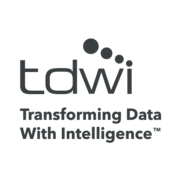Fine-Tuning vs. Knowledge Base: Optimizing Large Language Models for Specific Use Cases

Introduction
In the rapidly evolving field of artificial intelligence, specifically with large language models (LLMs) like GPT, businesses and developers are continually seeking ways to tailor these models to meet specific needs. Two primary methods stand out: fine-tuning and leveraging a knowledge base. Each approach has its distinct advantages and is suited for different types of applications. This article explores both methods in detail, helping you decide which is best for your use case.
Fine-Tuning Large Language Models
Fine-tuning involves retraining an existing large language model with additional data to modify its behavior or improve its performance on specific tasks. This method is particularly effective when you need the model to emulate a specific style or personality, such as mimicking a public figure's speech patterns or adapting to a specialized domain.
Key Steps in Fine-Tuning:
Choosing the Base Model:
Select a model that fits your requirements. For instance, Falcon, known for its versatility and power, is a popular choice among developers. Falcon offers different versions, including a robust 40B parameter model for more intensive tasks and a lighter 7B version for faster performance
Preparing Training Data:
The quality and relevance of your training data are crucial. You can use public datasets available on platforms like Kaggle or Hugging Face. However, for more precise applications, proprietary data often yields better results. Even small datasets of around 100-200 rows can be sufficient to fine-tune the model effectively
Setting Up the Environment:
Use platforms like Google Colab to fine-tune your model. Ensure you have the necessary computational resources, such as GPUs, to handle the process efficiently. Install required libraries, import your datasets, and configure the model settings
Executing the Fine-Tuning:
Load your base model, prepare the data, and run the fine-tuning script. This step involves setting training arguments and initiating the training process. Depending on the model size and computational power, this can take anywhere from a few minutes to several hours
Evaluating and Saving the Model:
After fine-tuning, evaluate the model's performance using specific tasks or prompts. Save the fine-tuned model locally or upload it to a platform like Hugging Face for broader accessibility
Using a Knowledge Base with Embedding
When the goal is to provide highly accurate and up-to-date information, a knowledge base approach is more suitable. This method involves creating an embedding or vector database of all relevant knowledge and using it to inform the model's responses.
Key Benefits of Knowledge Base:
Accuracy and Relevance:
By embedding a knowledge base, the model can access real-time data and provide precise answers. This is especially useful in domains like finance, legal, or healthcare where up-to-date information is critical
Cost Efficiency:
Instead of constantly fine-tuning the model, embedding allows the use of existing data sources to enrich the model’s output. This approach can significantly reduce costs and computational resources
Enhanced Security:
Embedding data directly within a knowledge base enhances security and privacy, ensuring sensitive information remains protected while still accessible for model queries
Practical Use Cases
Fine-Tuning:
- Creating AI personalities that emulate specific figures.
- Tailoring models for specialized customer support roles.
- Developing AI systems for creative applications like generating art prompts
Knowledge Base:
- Building robust financial advisory tools.
- Developing comprehensive legal research assistants.
- Enhancing medical diagnosis systems with real-time data access
Conclusion
Both fine-tuning and knowledge base embedding are powerful methods for optimizing large language models. The choice between the two depends largely on the specific requirements and constraints of your project. Fine-tuning offers a customized approach to model behavior, ideal for creative and highly specific tasks. In contrast, embedding a knowledge base provides accuracy, relevance, and efficiency, making it suitable for information-rich applications.
By understanding the strengths and applications of each method, you can better leverage these technologies to meet your unique needs and drive innovation in your field.
Resources








